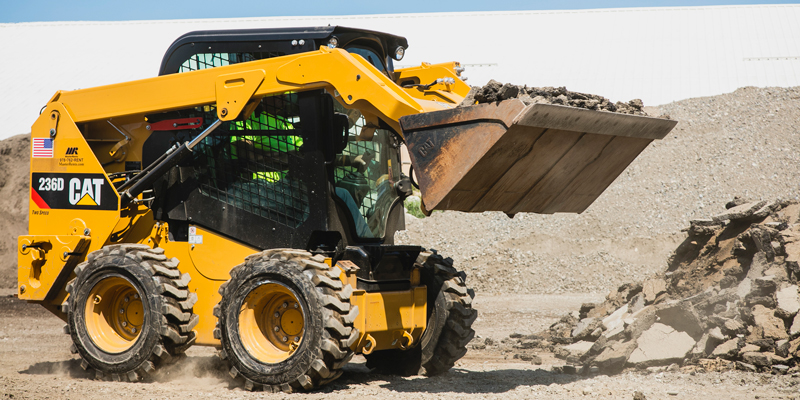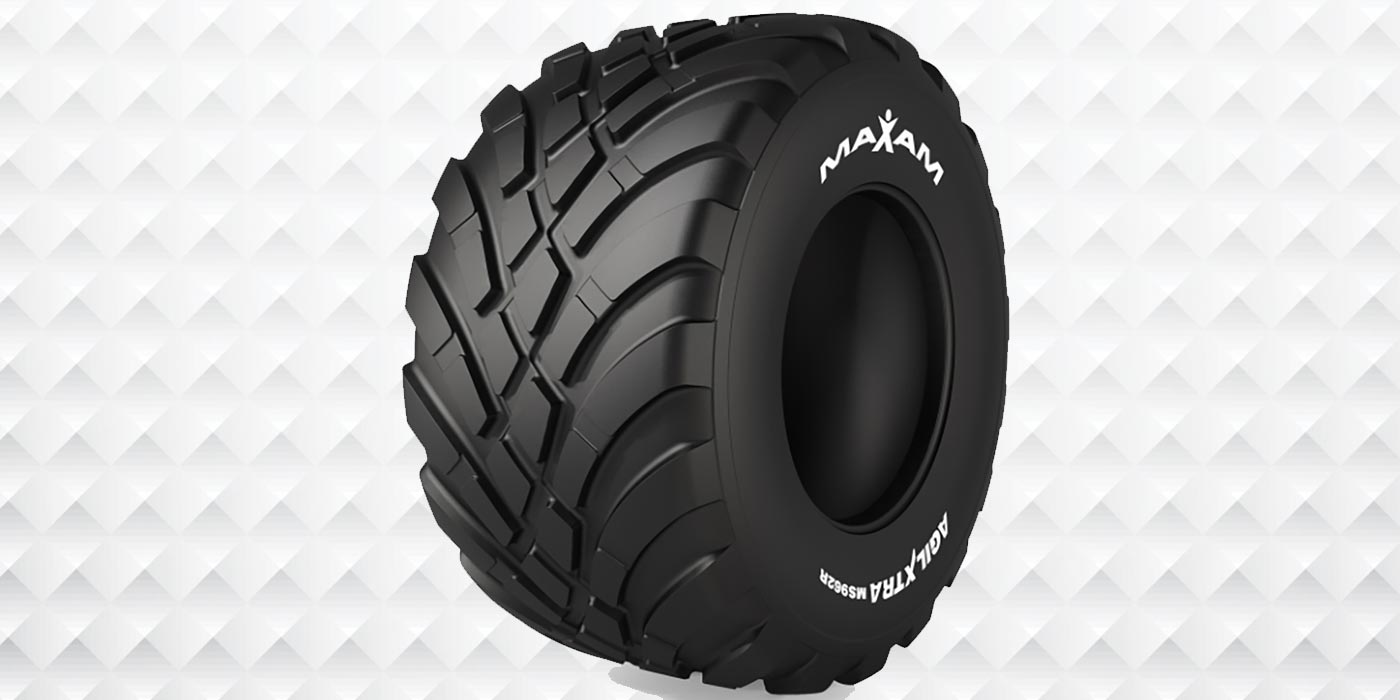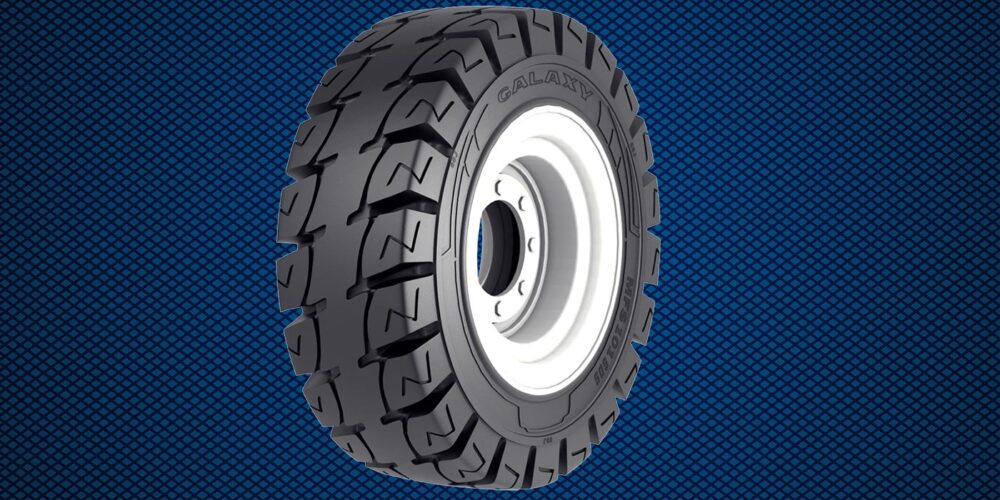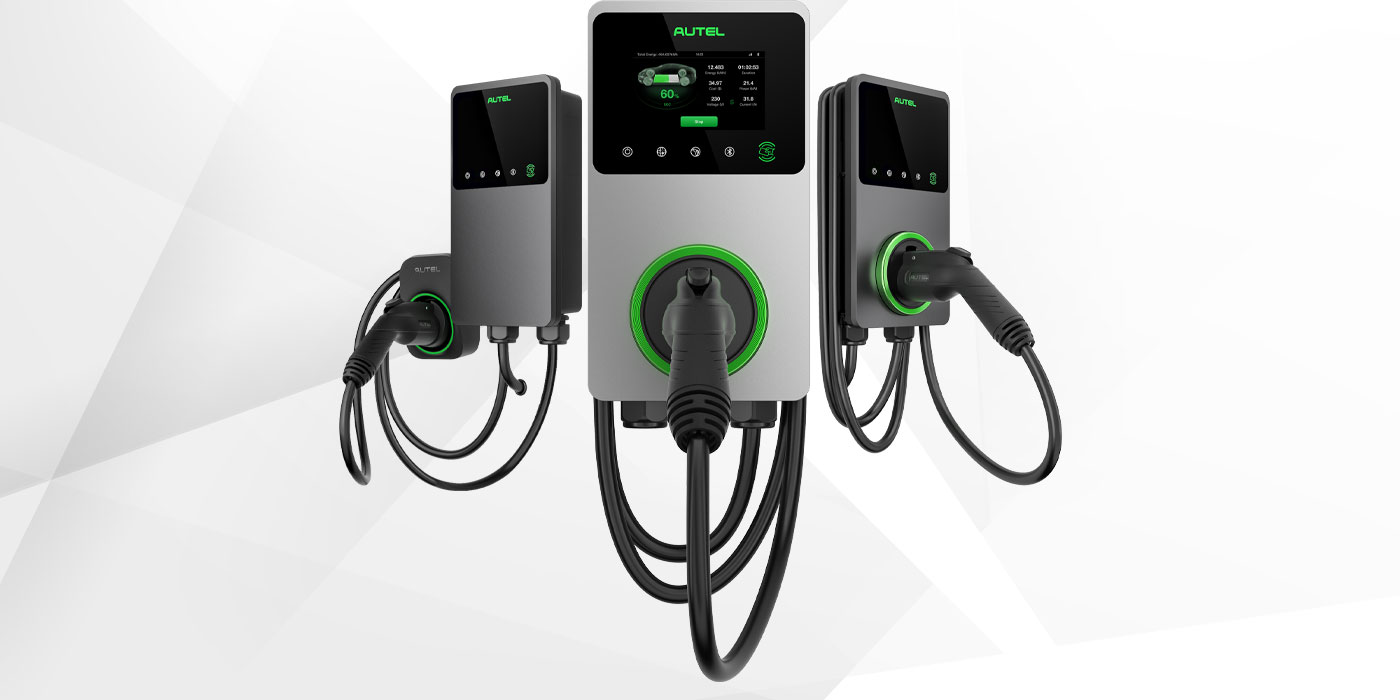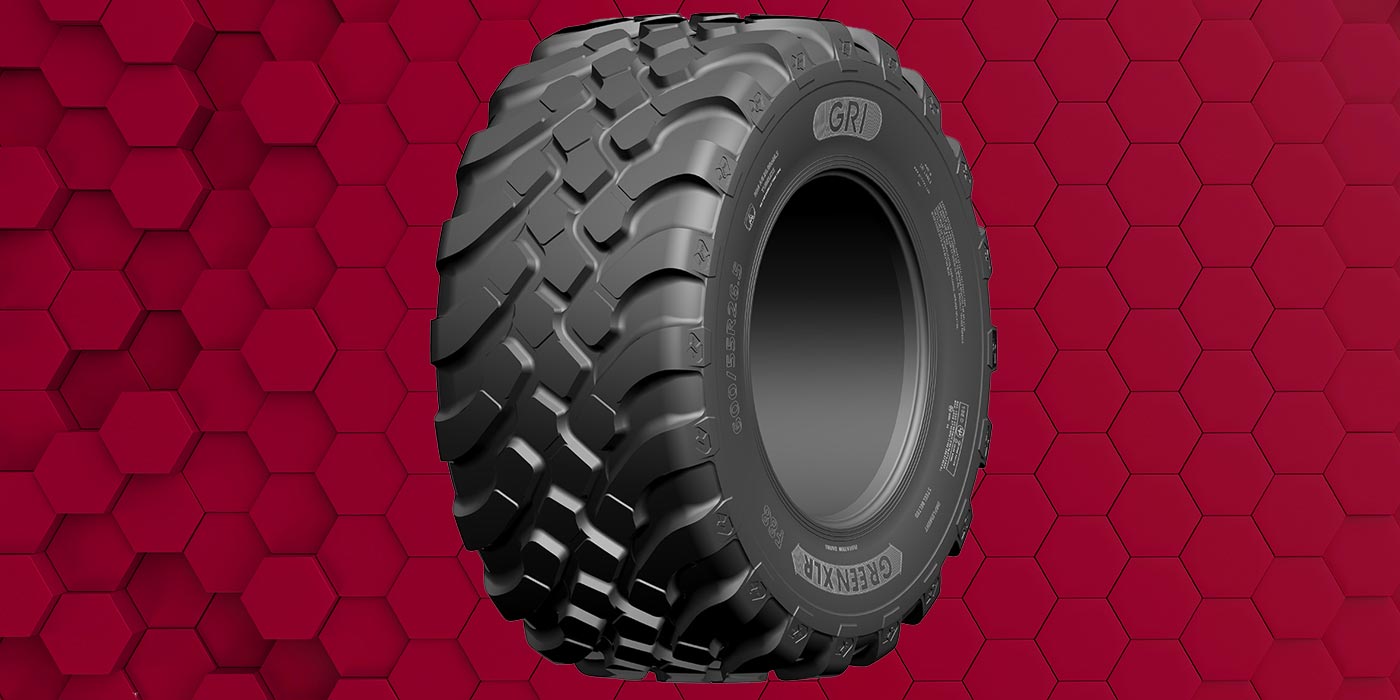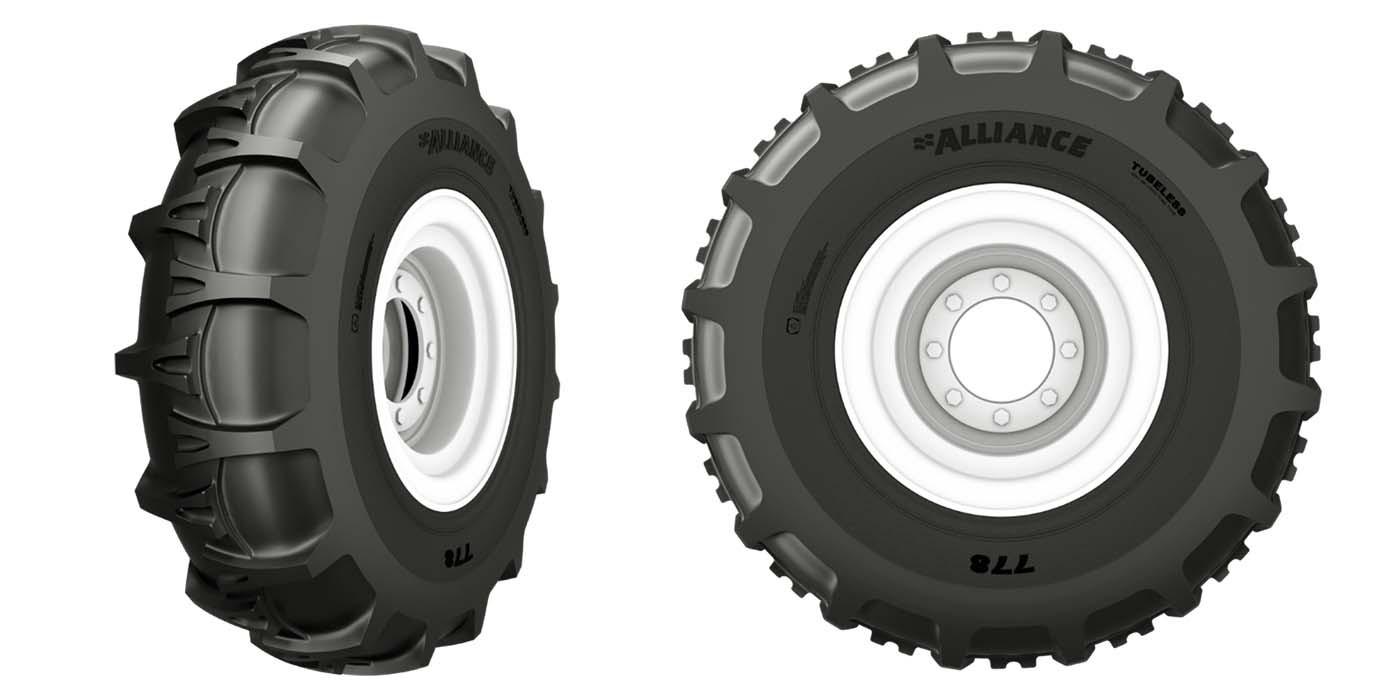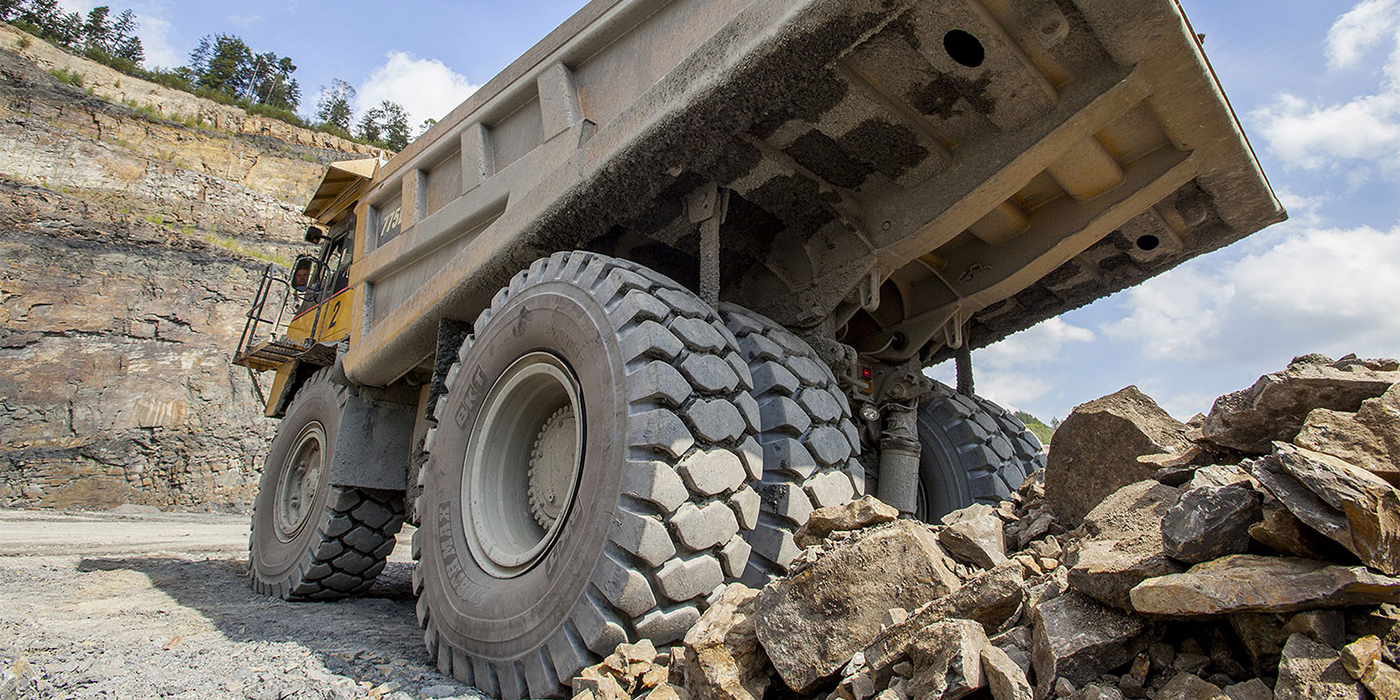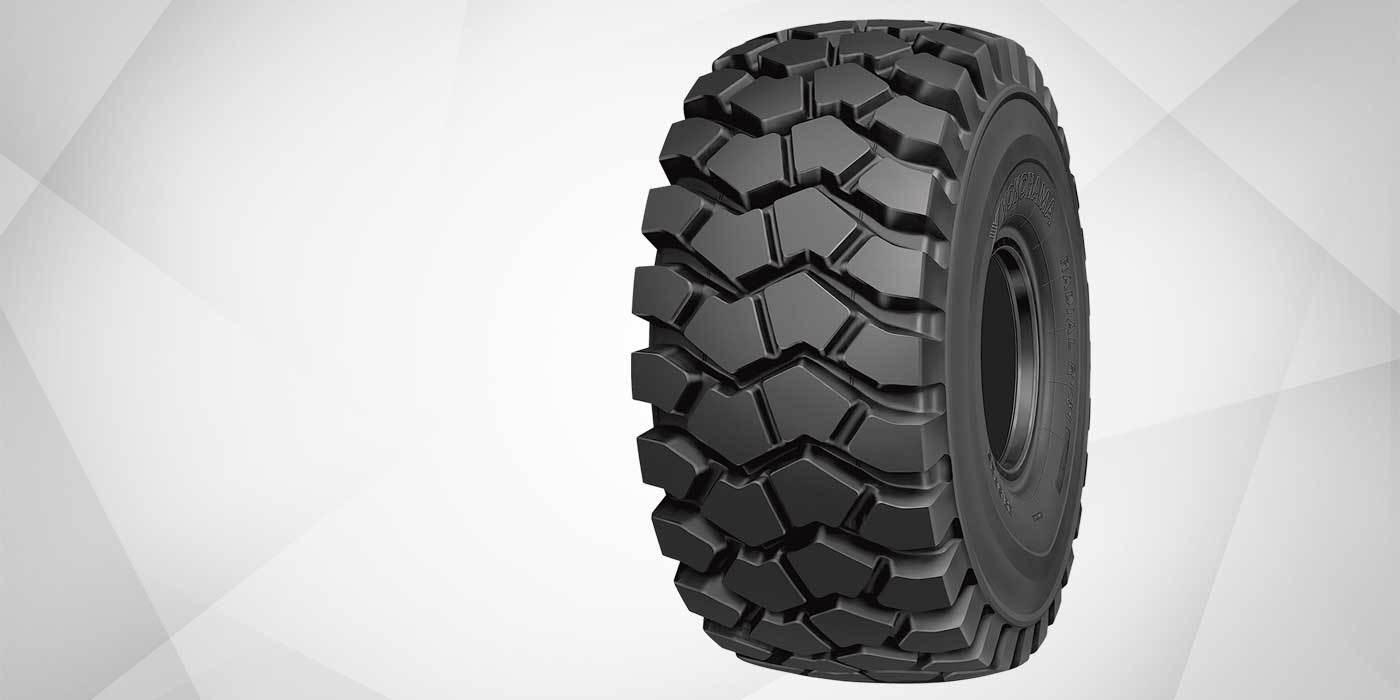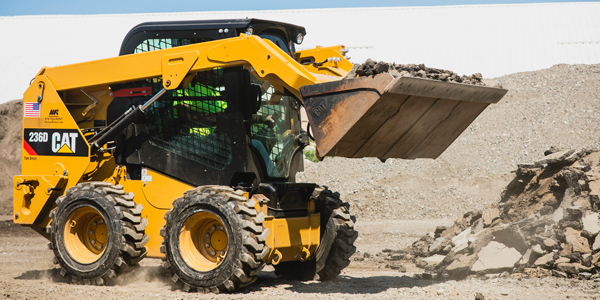
Realizing the crucial role that tires play in skid steer performance, owners are increasingly seeking out features and benefits to maximize their return on investment in terms of uptime, fuel efficiency, productivity, performance and tire life.
Determining the real-life operating conditions your customers face, most-used applications, the types of terrain they will ride on and their budget will help you better serve your customers and provide the right solutions for their needs. So, rather than talking about acquisition costs, dealers need to talk in terms of total cost of ownership, tapping their math skills to break down the cost by the number of projected service hours, when making recommendations for product fitments — all the while factoring in the inherent benefits of technology and innovation at the core of their construction.
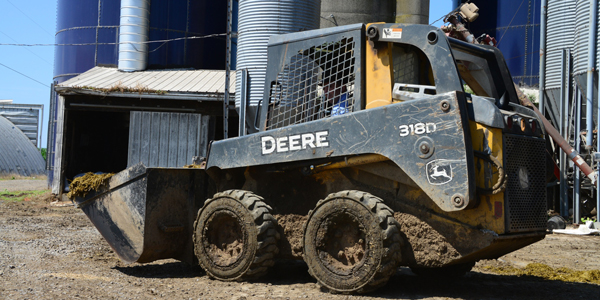
Diggin’ In
With so many options on the market today for skid steer loaders, when should dealers recommend tires vs. tracks? Solid vs. pneumatic skid steer tires? Or, bias vs. radial?
“The true answer is, it really depends – all the solutions have a place in the market,” says Justin Brock, marketing manager–construction and tweel, Michelin North America. “For example, track machines will do great in situations where high floatation is required. Track machines will provide the most distributed contact points to the ground for traction and stability. Wheeled machines do great in maneuverability and versatility. Wheeled machines are easily serviced as well.”
Regarding tire options, Brock notes: “Bias tires are still the most popular tire choice for skid steer loaders and work well in many applications. The rental industry has started to turn to tire solutions that eliminate downtime due to flat tires, i.e. solid tires or foam filled. Radial tires can improve traction, decrease downtime and increase tread life vs. other pneumatic solutions.”
Understanding that the application is truly key, dealers should ask about site conditions and the expected performance to make the proper tire recommendation (tread, compound, construction, etc.) to fit a customer’s specific needs, Brock says. For example, if the customer’s skid steer is on pavement all day, their needs from a tire will be much different than someone who uses it off road.
“Understanding the needs or current pain points of the customer can help you direct them to the correct solution,” he says. “Someone who needs traction but never has flat tires may not need an airless option.”
Tracks are a great technology, but their high cost, complexity, weight and maintenance needs put them out of reach of many skid steer owners, says Ryan Lopes, national product manager-material handling and solid tires, Alliance Tire Americas. And, with basically one tread pattern, it’s difficult or impossible to optimize the footprint for the specific needs of the worksite or conditions, he says.
The overall field population for skid steer loaders in North America is just over 1 million machines, with about 70% running on tires and 30% running on tracks.
Source: Yengst Associates, November 2017 Study
Dave Paulk, manager–field technical services, BKT USA, Inc. & BKT Tires, Inc., says rubber tracks are generally used on skid steers to minimize soil and ground damage in construction and new home site applications. They have less ground pressure and can help prevent ruts especially when the ground is wet or muddy. They’re also used to minimize damage to finished surfaces and pavement and can improve traction in wet dirt. Their cousin, steel tracks, are used mainly for traction in muddy conditions and don’t always provide the same benefits as rubber tracks when damage to the site is considered, Paulk adds.
When making the choice between tires or tracks, it usually comes down to machine selection, says Andy Gaffney, product line manager–tracks, construction at Camso.
“Why choose a tracked machine?” he asks. “Better rider comfort, smoother ride and even weight distribution because of the greater ground footprint. Tracks also increase traction.”
Gaffney says the only time that a track would be recommended for a machine running on tires is for over-the-tire tracks (OTT). These are recommended in applications where the user has maxed out the traction of their tire — for example, when mud is at its peak during spring and fall season, or when a skid steer is used during winter in deep snow and on icy surfaces.
Speaking to market potential for track replacement, he adds that while the overall machine production is still very much on tires (up to 70% of new skid steers sold in North America are now tracked machines), tire dealers should ensure they have proper training and awareness of rubber tracks.
However, Lopes says tire-equipped skid steers have remained the go-to machine for roadwork, demolition, scrap, recycling, feedlots and many landscaping projects because of their superior performance on hard surfaces. He says skid steer tires are also offered in a variety of construction types including bias, radial and solid, which means you can find a tire for every type of operation, from basic bias to severe-duty solid and everything in between.
“Skid steers have traditionally been a bias-ply tire market, and bias tires have performed extremely well,” Lopes says. “Bias-ply tires are very cost-effective, and because of how they are constructed, the tires have great lateral stability, which is extremely important for skid steer loaders in many circumstances.”
Radials for skid steer applications are also getting customers’ attention because of their inherent benefits, including operator comfort, a better footprint, increased traction and longer service life. And, with those that are airless or have a flexible sidewall, there is the added benefit of reduction in equipment bouncing.
“The popularity of skid steer radial tires may not have grown as fast as radials in other categories like truck tires or farm tires, as most skid steer owners do not track the life of their tires or measure productivity gains from their investment in tire technologies,” Lopes says. “However, skid steer owners will see the same benefits from radial tires as the owners of other machines on radials do.”
Solid tires have also gained in popularity in recent years, says Dominic Gosselin, product line manager, Americas–construction tires at Camso.
“All applications that can’t handle flat tires or that deal with high risks of impacts can greatly benefit from solid tires,” Gosselin explains. “Typical applications for solid tires are waste management sites, scrapyards and demolition applications. That being said, they’re also being used more and more in road building. Rentals and contractors are normally using both solids and pneumatics, and they will select the right technology according to the work surface. On the overall skid steer loader population, it’s estimated that 10% are currently using solids. While it’s still a niche market it is quickly growing.”
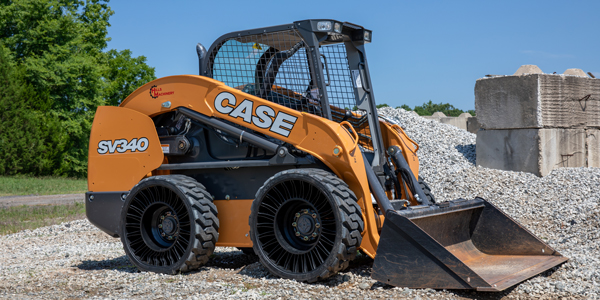
Trends & Opportunities
Looking at trends, skid steer loaders are stronger, greener (they produce less emissions) and more comfortable, and the tires made for them are evolving to meet the needs of these hard-working machines — revered for their versatility, efficiency and maneuverability.
“The tire dealer should know that there are a lot of options for SSL – bias, foam-filled, radial, solid, airless radial with hard surface tread designs, all-terrain, smooth, deep tread, all season, winter – the list goes on. Understanding the application and customer needs will be key in providing the best solution,” notes Michelin’s Brock.
Regarding sizes, he says the market has stayed consistent with 12-16.5-in. and 10-16.5-in being the most common with 14-17.5-in. becoming more popular due to larger machines.
Skid steer tire manufacturers agree that the growing rental market is one trend that affects tire dealers whose customers work with skid steers and provides ample opportunities for sales in meeting their needs.
“About half of the customer base of skid steer equipment is divided into rental fleets or contractors who do different jobs on different surfaces with the same equipment — about one-third of last year’s skid steer buyers were rental houses and one quarter were general contractors,” says Alliance Tire Americas’ Lopes. “The other segment is represented by customers who perform specific applications such as dairy farms and feedlots, landscaping, road construction, etc.”
Camso’s Gosselin provides a tip in catering to this segment. “Dealers should adapt to and serve this “service industry,” which is challenging since many rental locations don’t order in advance. Instead, they rely on local dealers to stock tire needs for just in time delivery. Independent dealers need to plan and purchase accordingly in order to have appropriate inventory on hand.
Eighty-four percent of skid steer sales in 2017 were in the 1,750-pound-plus capacity category, the largest of the three size classes — a figure that has been growing steadily for a decade.
Source: Yengst Associates
Another trend, Gosselin says, is the increase in ply rating (PR). “It is commonly misunderstood by most users that a higher ply rating means somehow a thicker, stronger tire — a tire that is more resistant to impact,” he explains. “Unfortunately, it is not the case.”
A higher ply rating allows for greater load capacity, which means you have to inflate the tire to a higher air pressure that carries the load, Gosselin adds. “It gives the user a stronger balloon that you can put more air into and is purely a function of load carrying capacity. There are no puncture resistance benefits to it.”
With the growing trend of specialization, dealers who stock their skid steer tires accordingly will be presented with loads of opportunities. It’s all in the name of application-specific performance.
“It’s important to note that the application-specific segment is a significant piece of the market. Last year, one in every four skid steers sold went to a farm,” Lopes explains. “One in 10 were sold to landscapers. Together, they represent a lot of specialized tires.”
Editor’s Note: Look for Part 2 of this article in an upcoming issue, where we’ll share more insights on solutions for skid steer applications, along with care and maintenance tips that dealers can pass along to their skid steer loader customers.
Check out the rest of the September digital edition of Tire Review here.

